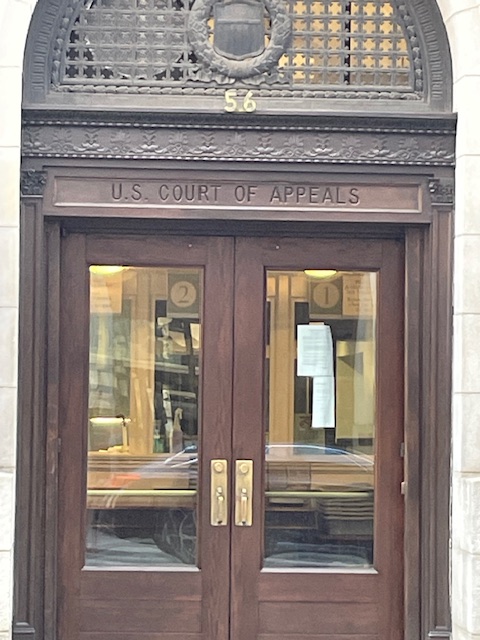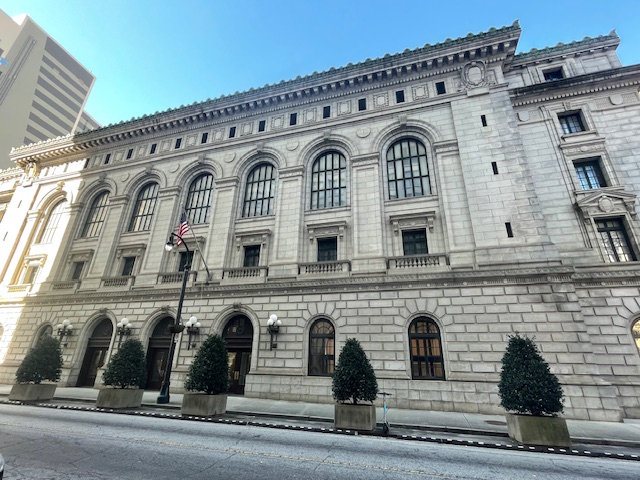The 11th Circuit Court of Appeals stands as a critical pillar of the American judicial system, serving Alabama, Florida, and Georgia. For attorneys and litigants stepping into this arena, understanding the nuances of the court’s procedures is paramount. Among these, the preparation and submission of briefs and appendices are key elements that can significantly impact the outcome of a case. In this blog, our printing company delves into the essentials of navigating the 11th Circuit Court of Appeals, focusing particularly on specific guidelines for printing, binding and delivering briefs to the court.
The Purpose of Briefs
Briefs are the primary means through which attorneys present their arguments to the court. In the context of the 11th Circuit, these documents are not mere formalities; they are the lifeblood of legal argumentation.
1. The Appellant’s Opening Brief:
Initiating the Appeal: For appellants, the opening brief is the first salvo in the appellate process. It lays out the reasons why the lower court’s decision was erroneous and why the appellant should prevail on appeal.
2. The Appellee’s Brief:
Responding to the Appeal: The appellee’s brief is the counterpoint to the appellant’s arguments. Here, the appellee defends the lower court’s decision and rebuts the appellant’s contentions.
3. The Reply Brief (Optional):
A Chance for Rebuttal: The appellant may file a reply brief to respond to points raised in the appellee’s brief. This brief is generally limited in scope and should focus on addressing new arguments raised by the appellee.
Printing the Briefs
After filing the brief electronically, hard copies of the brief need to be printed, bound and delivered to the 11th Circuit Court of Appeals. Depending on the type of brief, different colors of cardstock covers are used to differentiate these briefs. The briefs are always printed 1-sided on standard 20# paper and double spaced. The black coil binding goes down the long edge of each printed brief complete with front and back cover. These hard copy briefs are hand delivered to the 11th Circuit Court of Appeals 2-3 days after the brief has been filed electronically.
The Role of Appendices
In addition to the briefs, the 11th Circuit requires the submission of appendices. These serve to provide the court with the necessary documentation to understand the case fully. An appendix is not merely a collection of documents but rather a strategic tool to support the arguments presented in the briefs.
- Contents of the Appendix:
Key Pleadings: This includes the relevant portions of the complaint, answer, and any other pleadings essential to understanding the case.
Trial Court Orders: Copies of the orders issued by the lower court are crucial for the appellate judges to follow the procedural history of the case.
Evidence: If a factual dispute is central to the appeal, excerpts from depositions, exhibits, or transcripts should be included.
Critical Documents: Any documents cited in the briefs should be included in the appendix for easy reference by the court.
2. Organizing the Appendix:
Sequential Order: Appendices should be organized in the same order as the corresponding sections in the brief. This ensures clarity and easy cross-referencing.
Pagination and Indexing: Each document in the appendix must be clearly paginated for quick navigation. An index at the beginning helps the court locate specific items efficiently.
3. Briefing the Appendix:
Cite to the Appendix: Throughout the briefs, attorneys should refer to the appendix when discussing specific documents or evidence. Proper citations help the court locate and review the referenced materials.
Clarity and Conciseness: The appendix should include only those documents essential to the arguments presented in the briefs. Extraneous material can clutter the record and distract from the core issues.
Printing the Appendix
Depending on the complexity of your case, back up documentation can become voluminous. Each volume of the appendix should not exceed 250 pages (1-sided, double spaced). Depending on the case, appendices can vary in size from one volume up to as many as fifteen volumes. Each volume of the appendix should have a white cardstock cover with the volume number and blank cardstock back cover. Each volume should also include a full index behind the cover page. For tabs, a “placeholder” tab sheet should be inserted to show where the tab should be placed after printing is complete. At potentially 250 pages each these thick documents are bound at the top along the short edge with strong black comb binding. These hard copy appendices are delivered within 5-6 business days after the brief and after all volumes of the appendix have been filed electronically.
Tips for Success
Navigating the 11th Circuit Court of Appeals can be a formidable task, but attention to detail and strategic planning can greatly enhance your chances of success. Here are some additional tips to consider:
Thorough Research: Ensure a comprehensive understanding of the relevant law, precedents, and court rules before drafting briefs.
Collaboration with Clients: Engage with your clients to gather all necessary documents and facts crucial to the appeal.
Clear and Persuasive Writing: Craft your arguments with clarity, coherence, and persuasive force. Remember, the judges are looking for cogent legal reasoning.

Compliance with Rules: Adhere strictly to the 11th Circuit’s formatting and procedural requirements. Failure to do so can result in rejection or dismissal of your brief.
In conclusion, the art of preparing briefs and appendices for the 11th Circuit Court of Appeals requires meticulous attention to detail, a thorough understanding of the law, and effective advocacy skills. By mastering these elements, attorneys and litigants can navigate the appellate process with confidence, presenting their case in the best possible light before the esteemed judges of the 11th Circuit. Contact us for help getting your briefs prepared today!

